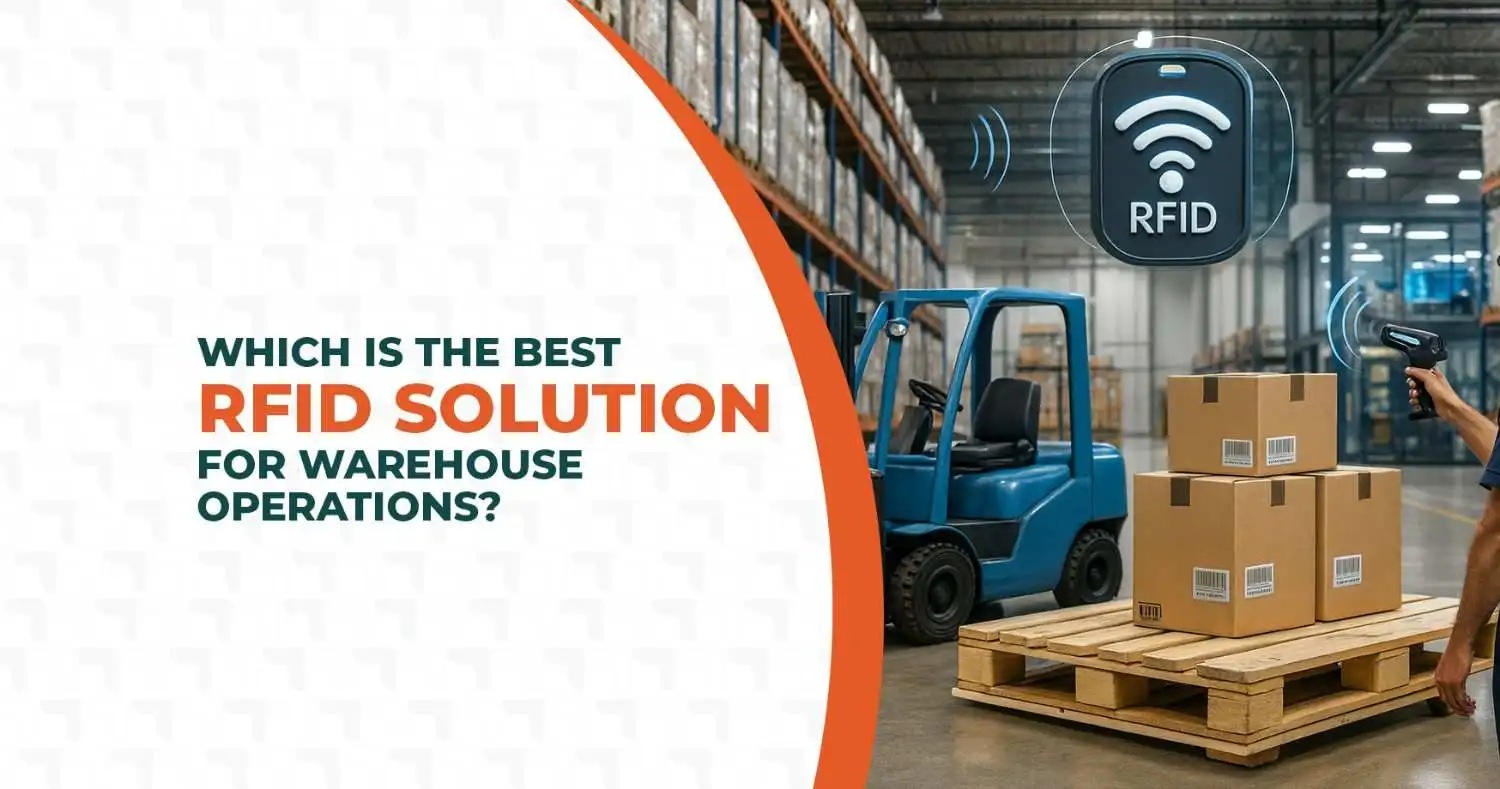
Track and Trace System for Pharma Packaging
A Track and Trace System for Pharma Packaging represents one of the most important digital solutions that is intended to give much-needed clarity and integrity to the pharmaceutical supply chain. At its core, this system allows pharmaceutical products manufactured at the source level to be traceable and safe as they move toward their end use, using unique identifiers in the form of serial numbers or barcodes for each product package. The system works primarily through serialisation, which gives a serial number to every product, and aggregation, which batches serial numbers for easy monitoring. The system is further facilitated by data management, which captures the real-time data for product location, temperature, and so forth.
Three main parts build tracking features right into the production process that make up an effective Track and Trace system: software for managing data processing and analytics; hardware, like barcode scanners and RFID readers, which make it easier to collect data; and seamless integration with packaging lines. By embracing the above technologies, pharmaceutical companies can fight drug counterfeiting, improve supply chain effectiveness, and meet very high regulatory compliance, thus enhancing consumer and stakeholder confidence.
Key Features of a Trace-and-Track System in Pharma Packaging
A trace-and-track system in pharmaceutical packaging possesses various essential characteristics that increase product safety and compliance throughout the entire supply chain.
The key features are:
a. Serialisation:
Each unit of medicine shall have a unique number that allows the production tracking to the distribution channel. Each unique identifier ensures that every unit can be tracked individually, thereby exposing counterfeiters who might introduce fake products into the market.
b. Aggregation:
Products are grouped into a hierarchical structure, making it easy to track the products at any level, for example, cases or pallets. Aggregation simplifies the management of inventory and enhances visibility across the supply chain.
c. Data Management and Reporting:
The system has strong data management capabilities that allow for accurate reporting, which will comply with regulatory standards. These include batch numbers, expiration dates, and tamper-evidence, which are vital to maintaining product integrity.
d. Real-Time Tracking and Monitoring:
Companies can monitor product movement and environmental conditions in real time with the integration of barcodes, RFID, and IoT sensors.
Explore the role of barcodes in pharma packaging.
How Trace and Track Systems Work in Pharma Packaging
Trace and Track Systems in pharmaceutical packaging work systematically to ensure safety and integrity from manufacturing to distribution. After serious consideration of the text and scenes, one simple message will reach the audience.
Start to Finish: Serialization to Distribution
1. Serialisation:
Every drug receives a unique serial number at the point of manufacturing, which is printed on its packaging. This identifier is very important for the tracking of the product along the chain of supply.
2. Tracking:
As the product flows through its various states of manufacturing, storage, and eventual distribution, its location is tracked in real time by scanning technologies.
3. Traceability:
Data concerning the product journey are preserved so that they can be traced back to the manufacturer if necessary.
4. Checking:
Labels of the products are checked for accuracy, and they include information such as expiration dates and lot numbers.
5. Coding:
Extra encoding might be printed to assist with aggregation, allowing the tracing of individual units to their associated packaging structures.
6. Verification:
The authenticity of the product can be verified at any point in the supply chain using its unique identifier.
Integration with ERP and Supply Chain Systems
Trace and Track Systems are fully deployable along existing ERP systems with other forms of supply chain management. Thus, there can be an easier transfer of information from one software system to the next with absolute confidence and knowledge of whether compliance or noncompliance of certain parameters has taken place between manufacturers and distributors.
Role of Technologies Like Barcodes, RFID, and IoT Sensors
a. Barcodes:
They are printed on packaging and scanned at various points in the supply chain, which captures real-time information about product movement.
b. RFID (Radio-Frequency Identification):
RFID tags improve tracking capabilities through the automatic identification of products without direct line-of-sight scanning, thus accelerating processes.
c. IoT Sensors:
These sensors monitor environmental conditions such as temperature and humidity during transportation to ensure that products remain within safe parameters.
Benefits of Trace and Track Systems in Pharma Packaging
A trace-and-track system in pharmaceutical packaging has several advantages. Some of these advantages are ensuring patient safety, transparency in the supply chain, and compliance with regulatory requirements. A trace-and-track system is critical in preventing counterfeit drugs from reaching the market, easy recalls, and enhancing customer trust in pharmaceutical brands.
1. Preventing Counterfeit Drugs in the Market:
The trace and track system can combat counterfeit drugs since it will assign every product with distinctive identifiers. It will assist stakeholders in monitoring whether the drugs are original or not, from the production to the consumption level.
2. Streamlining Recalls and Improving Inventory Management:
In cases of product recall, trace and track systems allow for prompt identification and isolation of recalled batches in the market. Such capability reduces patient health risks and, more so, helps in inventory management through real-time information about stock positions and whereabouts. With a trace-and-track system in place, a company can really streamline supply chain processes and save on operational costs.
3 . Regulatory Compliance:
Pharmaceutical companies have to follow strict rules set by regulators. The trace and trace system makes sure that the right information is collected about where a product came from, how it was stored, and any other information that could lead to a danger or a penalty for not following the rules.
4 . Developing Customer Trust and Brand Reputation:
Trace and track systems enhance significant customer trust because of increased transparency in the supply chain. Consumers trust brands when they can verify the authenticity and safety of the medication. Such a reputation for quality and safety may help enhance customer loyalty with a competitive advantage in the marketplace.
In summary, pharmaceutical companies implement trace and track systems for pharma packaging to protect patients, ensure efficiency, comply with regulatory agencies, and maintain brand integrity.
Challenges in Implementing Trace and Track Systems in Pharma Packaging
Trace and track systems may require substantial investment, which can be a barrier for small to mid-sized pharmaceutical companies that deal with limited funds and infrastructure. The implementation of trace and track systems becomes difficult for such organisations because of insufficient budget allocation for the necessary technology upgrade, training, and system integration. Ongoing maintenance operational costs can further aggravate their strained financial capabilities.
1. Complexity in Integrating with Existing Packaging Lines:
The integration of trace and track systems to an already operating packaging line can be extremely challenging. Pharmaceutical companies also rely on diverse equipment obtained from several other firms, and sometimes, it cannot communicate with newer serialisation technology. The lack of interoperability can cause operational disruptions during the integration process. Furthermore, adjustments to production workflows to accommodate new tracking technologies can be quite complicated and increase downtime.
2. Addressing Data Security and Scalability:
Managing large volumes of traceability data requires robust cybersecurity measures to prevent breaches. Pharmaceutical companies have to protect their sensitive information from potential cyber-attacks while ensuring adherence to data privacy laws.
3. Another factor is scalability:
Businesses grow and expand into new markets, and the trace and track systems need to adapt to such growth. Careful planning is required so that the infrastructure can handle large data volumes without any performance or security issues.
Global Regulatory Standards for Pharma Packaging
Global standards for the regulatory control of pharmaceutical packaging are essential for ensuring the safety, efficacy, and quality of medicines. Each country and region legislates variations of regional standards to protect patients from contamination, counterfeiting, and potential medication errors.
Overview of Key Regulations of Various Regions
a. USA: Drug Supply Chain Security Act (DSCSA):
In 2013, the DSCSA required all prescription drugs sold in the US to be serialised and followed within the supply chain. The law demands that manufacturers must provide information on the transaction history of drug products in all detail to enhance traceability and keep counterfeit drugs off the market.
b. EU: Falsified Medicines Directive (FMD):
Fraudulent medicines are fought against by the Directive on Falsified Medicines (FMD), which requires safety features on packaging like unique identifiers, a tamper-evident seal, and verification at the time of dispensing. This way, only real medicines get to patients. The document also has other strict guidelines around record-keeping and reporting, coupled with severe penal provisions for those who fail to comply.
c. Other Countries (for example, China, India):
In China, regulations mandate rigid serialisation and track-and-trace as in the U.S. and the EU. The Indian government recently mandated the use of QR codes on pharmaceutical packaging, which improves traceability and prevents the counterfeiting of these products. It contains the all-important details related to manufacturing, along with the expiration date.
Deadlines and Penalties for Non-Compliance
Every regulatory structure has set deadlines for implementation. In the case of DSCSA, it means that from November 2023, manufacturers must implement serialisation. Some penalties for not complying with any of these laws include costly fines and possible legal action, along with being banned from trading in their markets. Not only does non-compliance put the smooth running of a firm at risk, but patient safety will also be called into question, undermining their confidence in these pharmaceutical products.
At any time, global regulatory standards must be adhered to for product safety, market access by pharmaceutical companies, and public health protection. Thus, companies ought to be aware of what the regulations say and take steps to adapt packaging processes as the regulations evolve.
Future Trends in Trace and Track for Pharma
Advancements in technology are transforming pharma track-and-trace systems. Innovative tools such as blockchain, artificial intelligence (AI), and the Internet of Things (IoT) are predicted to be drivers of the change.
1. Blockchain for Enhanced Traceability:
● Decentralized ledgers ensure tamper-proof transaction records.
● Prevents fraud and increases supply chain transparency.
2. AI and Machine Learning for Predictive Analytics:
● AI helps in detecting anomalies and predicting supply chain disruptions.
● Machine learning optimizes inventory management.
3 . Expansion of IoT Integration for Real-Time Monitoring:
● Smart sensors track temperature, humidity, and location.
● Enhances cold chain logistics for vaccines and biologics.
Conclusion
A trace-and-track system for pharma packaging works toward ensuring drug safety, regulatory compliance, and supply chain efficiency. By tracing a suite of advanced serialisation and tracking technologies and deploying data management systems, pharmaceutical manufacturers can fight counterfeit drugs, streamline recalls,s and foster customer trust, thus enabling the industry to act. Invest today in a trace-and-track pharmacy system to ensure a safe and transparent pharmaceutical world tomorrow.
Looking to enhance your track-and-trace capabilities? Explore cutting-edge solutions here.
You may also find these topics Interesting
How integration with RFID tech benefits the pharmaceutical industry?
3 Ways Itemised RFID Tracking is Crucial to Our Pharma Sector
A Closer Look at Revolutionary Relationship between IoT Technology & Pharma
Track and Trace in Pharmaceutical: Step By Step Guide
How Warehouse Operations Management Solution (WOMS) is Changing The Pharmaceutical Industry
How Asset Management Software Can Help Pharmaceutical Companies Maintain Compliance
How Factory Automation is leading the golden era of the Pharma Industry in the New Normal
FAQs
1. What is track and trace in pharmacy?
The Track and Trace System in pharmacy ensures drug safety and does not allow the circulation of counterfeit drugs by tracing the supply chain from production to the end user. Every step of the movement of a drug is tracked with a traceability system, making the pharmaceutical supply chain more transparent and responsible.
2. What is traceability in the pharmaceutical industry?
Traceability in pharmacy manufacturing refers to the ability of manufacturing companies to maintain records of each batch at each step of the process. This means that every component and stage of the process of creating a batch for production can be traced starting from its origin up to its end consumer.
3 . What is a track-and-trace system for pharma packaging?
A track-and-trace system for pharmaceutical packaging is used to track the movement of drugs from manufacturing to consumers. It uses unique identifiers, such as barcodes or QR codes, to track the location and history of a drug along the supply chain. This system provides safety because it ensures that the products reaching consumers are genuine. It also helps in the proper recall process, if required. It provides real-time data regarding the movement of products, thus mitigating the risks of counterfeit drugs and improving supply chain management as a whole.
Get in Touch
Ready to take your business to the next level with BCI (Bar Code India)? We're just a phone call or email away.


